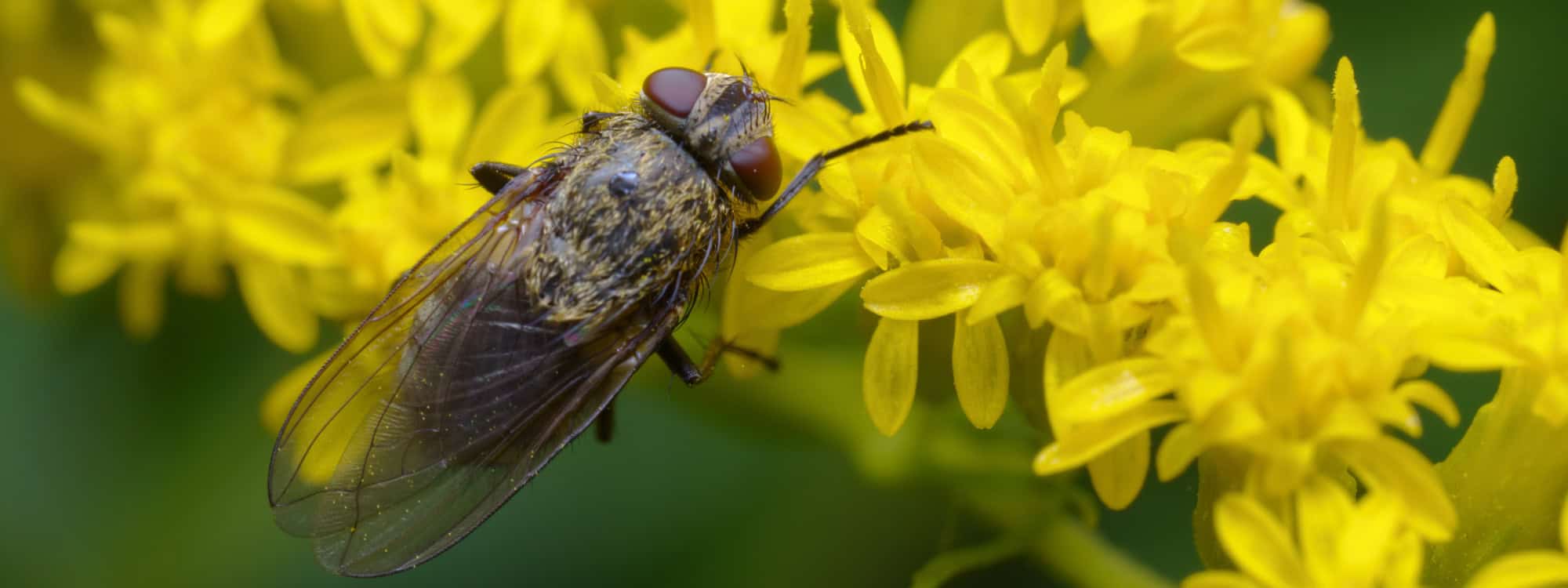Cluster Flies
Identification:
Cluster flies, commonly found in Muskoka, are medium-sized flies, measuring about 8 to 10 mm in length. They have a grayish-brown body covered in fine, golden hairs, and their thorax features distinctive dark stripes. Cluster flies are often confused with house flies, but they are slightly larger and have a more noticeable golden sheen. Unlike house flies, cluster flies do not feed on food but are attracted to warm, sheltered areas where they can overwinter, such as attics and wall voids. While they do not bite or sting, their presence in large numbers can become a nuisance.
Habitat:
In Muskoka, cluster flies are known to invade homes and other structures during the fall as they seek warm places to overwinter. These flies prefer areas such as attics, wall cavities, and behind windows, where they congregate in large groups. Cluster flies are often found in rural and wooded areas, where they breed in soil, laying their eggs in earthworms. During the colder months, they cluster together in sheltered spots, making them a common pest in homes and cottages as the temperature drops. They are particularly active during late fall and winter.
Diet:
Cluster flies do not feed on food like other flies; instead, they feed on earthworms when they are in the larval stage. The adult flies are primarily interested in finding a place to overwinter, rather than foraging for food. During warmer months, they can sometimes be found near gardens and lawns where they can access earthworms to feed on. Inside homes, they do not pose a risk to food supplies but may become a nuisance as they try to find a way out of the building in the spring.
Behavior:
Cluster flies are relatively sluggish and often appear lethargic during their time indoors. They tend to gather in large numbers, especially in warmer, sunlit areas within homes. While they do not bite or harm humans, their presence in the fall and winter can create a significant nuisance. They are often found buzzing around windows, trying to escape the confines of their hiding spots. Their behavior of clustering together in dark, undisturbed areas of the home makes them easily identifiable when an infestation occurs.
Prevention:
To prevent cluster fly infestations, it is essential to seal potential entry points such as cracks around windows, doors, and vents. Ensuring that your home is properly sealed, especially during the colder months, can help reduce the likelihood of cluster flies entering your home. Regularly checking for signs of infestation, particularly in attics and wall voids, can also help identify the issue early. Bug Free Muskoka’s General Pest Control Service offers a proactive approach to cluster fly prevention by focusing on sealing entry points and applying treatments to deter these flies from entering your home.
Control:
Managing cluster flies involves both prevention and active control measures. If an infestation is present, professional pest control services may use vacuuming to remove the flies from walls and ceilings. Insecticidal treatments are also commonly used to target cluster fly populations. Sealing cracks and gaps around your home is key to preventing future infestations. Regular inspections, particularly before winter, can help keep cluster fly numbers at bay. If you experience an increase in cluster fly activity, it’s advisable to contact Bug Free Muskoka to ensure safe and effective removal.
For a comprehensive solution against cluster flies and other pests, Bug Free Muskoka provides thorough pest control services. By applying preventive measures and offering treatment options, homeowners can reduce the risk of cluster fly infestations, ensuring a more comfortable living environment during the colder months.

